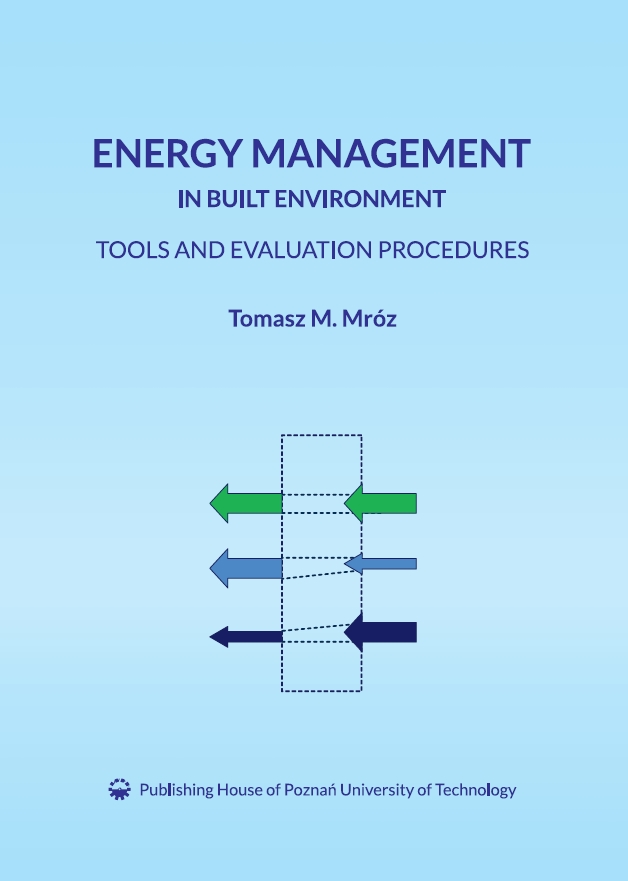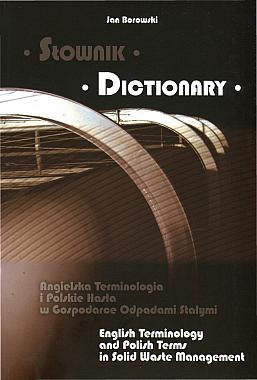There are three main pillars of sustainable development:
- economic growth,
- environmental protection
- social equality.
Those pillars refer directly to the definition of sustainable development that was proposed by Gro Harlem Brundlant in the Report: “Our common future” in 1987: “Sustainable development is development that meets the needs of the present without compromising the ability of future generations to meet their own needs”.
The idea of this book is to present tools and procedures that can be useful in the evaluation and optimization of the built environment related energy systems enabling their sustainable development. The built environment is regarded as manmade structures and infrastructures used by people for living, working and recreating on a day-to-day basis.
This book can be a support for second cycle environmental engineering students, consulting and facility management engineers dealing with built environment energy related systems.
CONTENTS
PREFACE. 5
1. INTRODUCTION.. 7
2. ENERGY ANALYSIS. 11
2.1. Energy balance equation. 11
2.2. Basic energy forms. 3
2.2.1. Heat 3
2.2.2. Mechanical work. 4
2.2.3. Energy of a substance. 5
2.3. Energy balance of simple systems. 8
2.3.1. Steam turbine. 8
2.3.2. Heater 10
2.3.3. Expansion tank. 11
2.3.4. Mixing of two fluids. 12
2.3.5. Circulation pump. 13
2.3.6. Compressor 15
2.4. Case study calculations. 16
2.4.1. Gas fired boiler 16
2.4.2. Counter pressure steam co-generated heat and power (CHP) plant 21
2.4.3. Discharge-condensing co-generated heat and power (CHP) plant 26
2.4.4. Air handling unit – supply air 31
2.4.5. Air handling unit – inlet-exhaust ventilation system.. 34
2.4.6. Compressor heat pump. 41
2.4.6. Single stage absorption water chiller 45
2.4.7. Single flash geothermal power plant 47
2.4.8. Double flash geothermal power plant 51
2.4.9. Geothermal ORC based CHP plant 54
3. EXERGY ANALYSIS. 61
3.1. Exergy balance equation. 61
3.2. Principles of exergy calculations. 64
3.2.1. Exergy of a substance. 64
3.2.2. The change of exergy of an external heat source. 67
3.3. Exergy balance calculations for simple systems. 67
3.3.1. Water radiator 67
3.3.2. Water air heater 69
3.3.3. Steam turbine. 73
3.3.4. Compressor 75
3.3.5. Mixing chamber of an air handling unit 76
3.4. Exergy calculations for complex energy systems. 80
3.4.1. Counter pressure steam co-generated heat and power (CHP) plant 80
3.4.2. Exergy balance calculations for the compressor heat pump. 87
3.4.3. Mechanical ventilation system.. 92
3.4.4. Exergy balance of a water based heating system.. 100
3.4.5. Exergy balance of a single stage absorption water chiller 107
4. ECONOMIC ANALYSIS. 111
4.1. Overview of economic methods. 111
4.2. Simple payback time. 111
4.2.1. The SPBT method description. 111
4.2.2. The SPBT case study calculation. 112
4.3. Net present value. 113
4.3.1. The NPV method description. 113
4.3.2. The NPV case study calculation. 114
4.4. Internal rate of return. 116
4.4.1. The IRR method description. 116
4.4.2. The IRR case study calculations. 117
4.5. Total operating cost 119
4.5.1. The TOC method description. 119
4.5.2. The TOC case study calculation. 119
5. MULTICRITERIA EVALUATION.. 3
5.1. A general approach. 3
5.2. Weighted sum method. 4
5.3. Electre III outranking method. 8
5.4. Examples of multicriteria evaluation. 10
5.4.1. Multicriteria design aid of an integrated heating-cooling system.. 10
5.4.2. Multicriteria decision aid in local energy planning. 20
5.4.3. Multicriteria selection of heat recovery device in a ventilation
system.. 26
APPENDIX.. 37
A1. Specific molar physical enthalpy of gases. 37
A2. Specific molar chemical enthalpy and exergy of substances. 4
A3. Saturated pressure of water 5
A4. Specific heat of saturated water 6
A5. Specific enthalpy of water evaporation. 7








Opinie
Na razie nie ma opinii o produkcie.